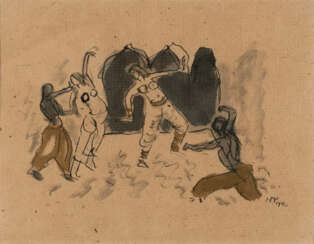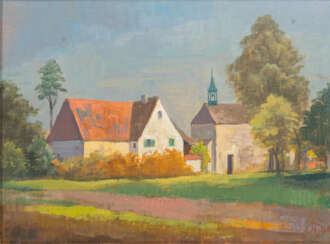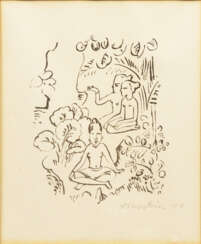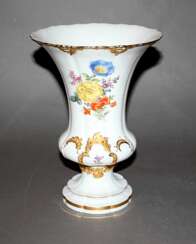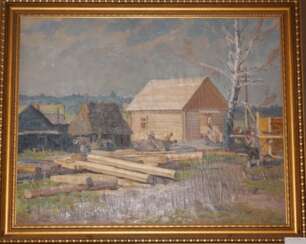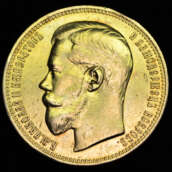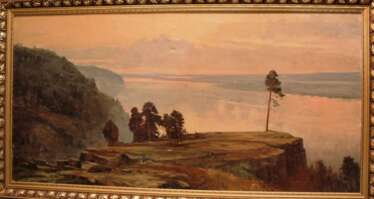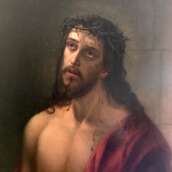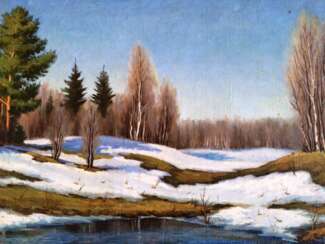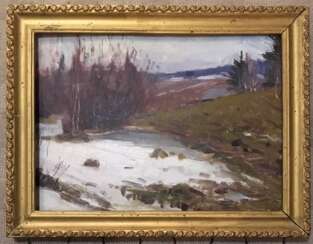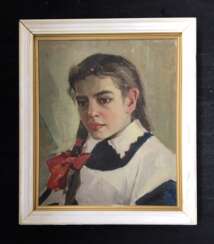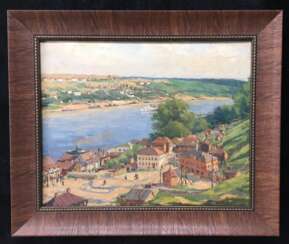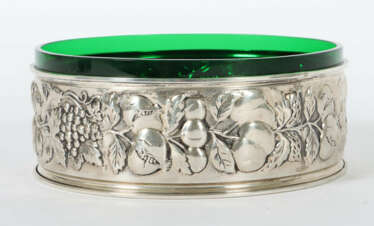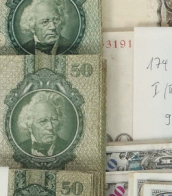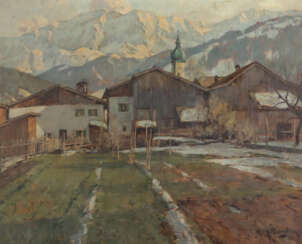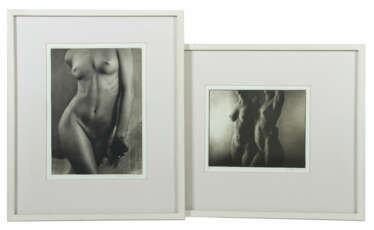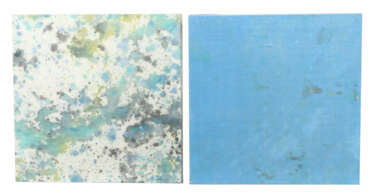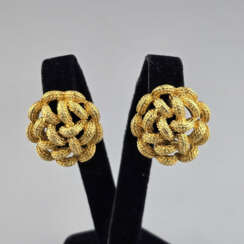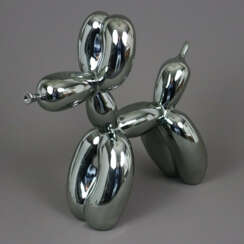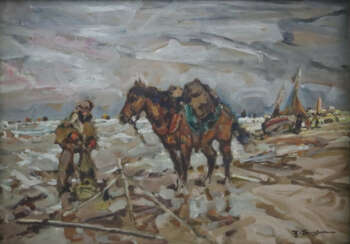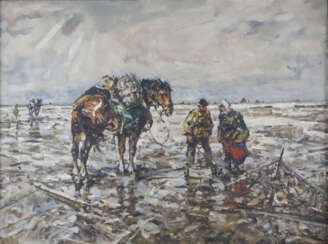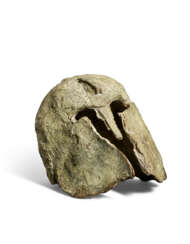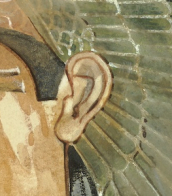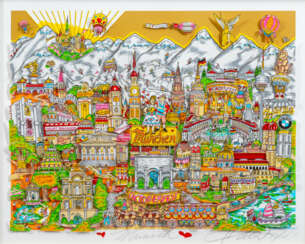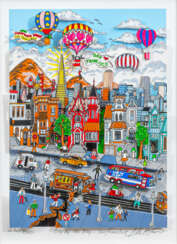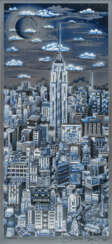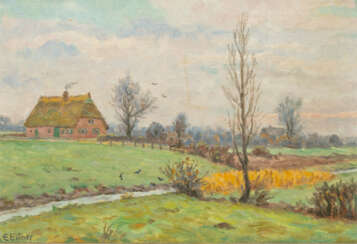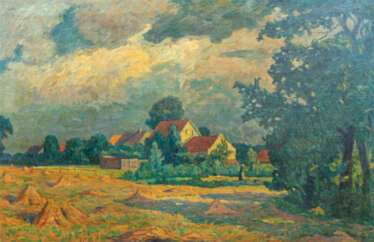1955
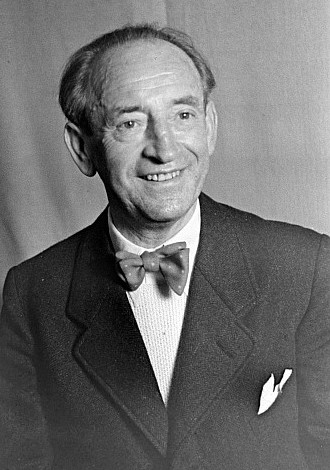
Max Pechstein, a German Expressionist painter and printmaker, was a significant figure in the art world known for his vibrant use of color and dynamic compositions. Born in Zwickau in 1881, Pechstein's journey into the realms of expressionism began with his training as a decorator's apprentice before moving to Dresden to further his studies at the Kunstgewerbeschule. His career took a pivotal turn in 1906 when he met Erich Heckel and joined the Die Brücke group, alongside other notable artists such as Ernst Ludwig Kirchner and Karl Schmidt-Rottluff, which marked the beginning of his foray into revolutionary art and expressionism.
Pechstein's art was not just confined to painting; he was also a master printmaker, with a prolific output that included 421 lithographs, 315 woodcuts and linocuts, and 165 intaglio prints, predominantly etchings. His works often depicted scenes from nature, social gatherings, and elements of primitive art, reflecting his interest in the raw and unrefined aspects of culture and humanity. This diverse body of work was recognized for its bold innovation and unique perspective, which significantly contributed to the expressionist movement.
The Nazis' rise to power in 1933 had a profound impact on Pechstein's career. His works were deemed degenerate, and he faced severe repression, including the removal of 326 of his paintings from German museums and his dismissal from his teaching position at the Preussische Akademie der Künste. Despite these challenges, Pechstein's legacy endured, and after World War II, he was reinstated to his teaching post and received numerous accolades for his contributions to art.
Pechstein's works are held in high esteem in museums and galleries worldwide. Notably, his etchings, which depicted the grim realities of war, are housed in the Imperial War Museum in London, showcasing his ability to convey profound emotional and psychological experiences through art. Additionally, his painting "Summer in Nidden," which captures the idyllic beauty of the Baltic coast, is part of the collection at the Museo Nacional Thyssen-Bornemisza in Madrid, illustrating his love for natural landscapes and vibrant, expressive use of color.
For collectors and experts in art and antiques, Hermann Max Pechstein's works offer a fascinating glimpse into the early 20th-century expressionist movement, characterized by a bold exploration of color, form, and social commentary. His contributions to modern art are invaluable, providing insight into the cultural and historical context of his time.
To stay informed about new product sales and auction events related to Hermann Max Pechstein, we invite you to sign up for updates. This subscription will ensure that you are the first to know about opportunities to acquire works by this influential artist, allowing you to add to your collection of significant expressionist art.
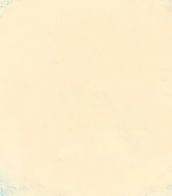
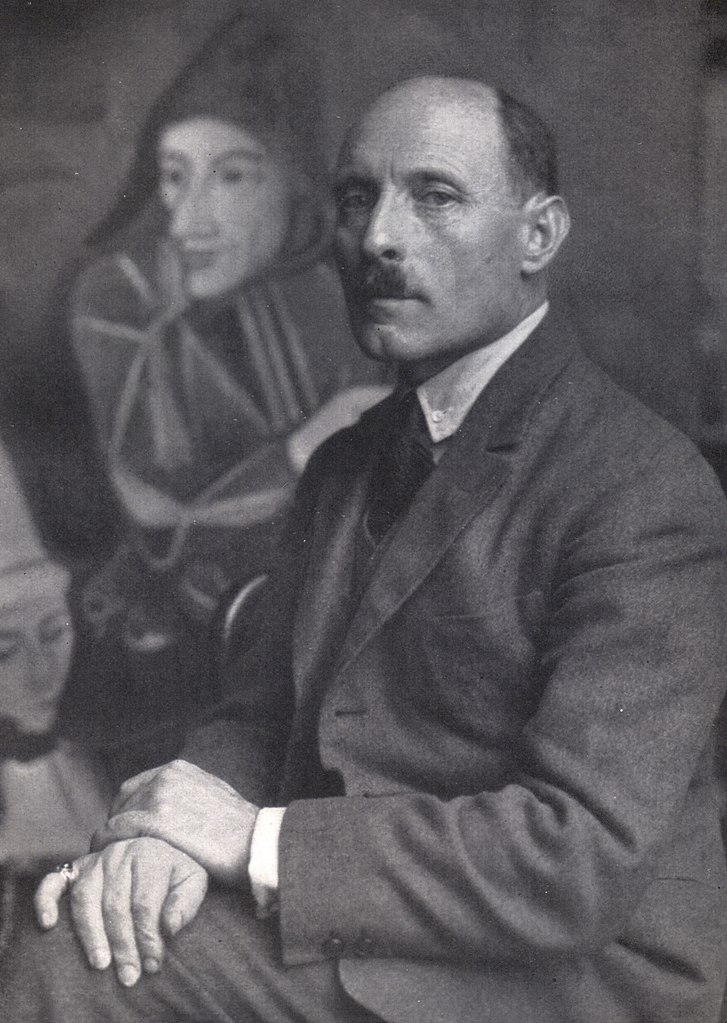
Karl Hofer was a German expressionist painter. He was director of the Berlin Academy of Fine Arts.
One of the most prominent painters of expressionism, he never was a member of one of the expressionist painting groups, like "Die Brücke", but was influenced by their painters. His work was among those considered degenerate art by the Nazis, but after World War II he regained recognition as one of the leading German painters.
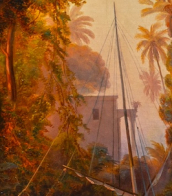

Max Pechstein, a German Expressionist painter and printmaker, was a significant figure in the art world known for his vibrant use of color and dynamic compositions. Born in Zwickau in 1881, Pechstein's journey into the realms of expressionism began with his training as a decorator's apprentice before moving to Dresden to further his studies at the Kunstgewerbeschule. His career took a pivotal turn in 1906 when he met Erich Heckel and joined the Die Brücke group, alongside other notable artists such as Ernst Ludwig Kirchner and Karl Schmidt-Rottluff, which marked the beginning of his foray into revolutionary art and expressionism.
Pechstein's art was not just confined to painting; he was also a master printmaker, with a prolific output that included 421 lithographs, 315 woodcuts and linocuts, and 165 intaglio prints, predominantly etchings. His works often depicted scenes from nature, social gatherings, and elements of primitive art, reflecting his interest in the raw and unrefined aspects of culture and humanity. This diverse body of work was recognized for its bold innovation and unique perspective, which significantly contributed to the expressionist movement.
The Nazis' rise to power in 1933 had a profound impact on Pechstein's career. His works were deemed degenerate, and he faced severe repression, including the removal of 326 of his paintings from German museums and his dismissal from his teaching position at the Preussische Akademie der Künste. Despite these challenges, Pechstein's legacy endured, and after World War II, he was reinstated to his teaching post and received numerous accolades for his contributions to art.
Pechstein's works are held in high esteem in museums and galleries worldwide. Notably, his etchings, which depicted the grim realities of war, are housed in the Imperial War Museum in London, showcasing his ability to convey profound emotional and psychological experiences through art. Additionally, his painting "Summer in Nidden," which captures the idyllic beauty of the Baltic coast, is part of the collection at the Museo Nacional Thyssen-Bornemisza in Madrid, illustrating his love for natural landscapes and vibrant, expressive use of color.
For collectors and experts in art and antiques, Hermann Max Pechstein's works offer a fascinating glimpse into the early 20th-century expressionist movement, characterized by a bold exploration of color, form, and social commentary. His contributions to modern art are invaluable, providing insight into the cultural and historical context of his time.
To stay informed about new product sales and auction events related to Hermann Max Pechstein, we invite you to sign up for updates. This subscription will ensure that you are the first to know about opportunities to acquire works by this influential artist, allowing you to add to your collection of significant expressionist art.

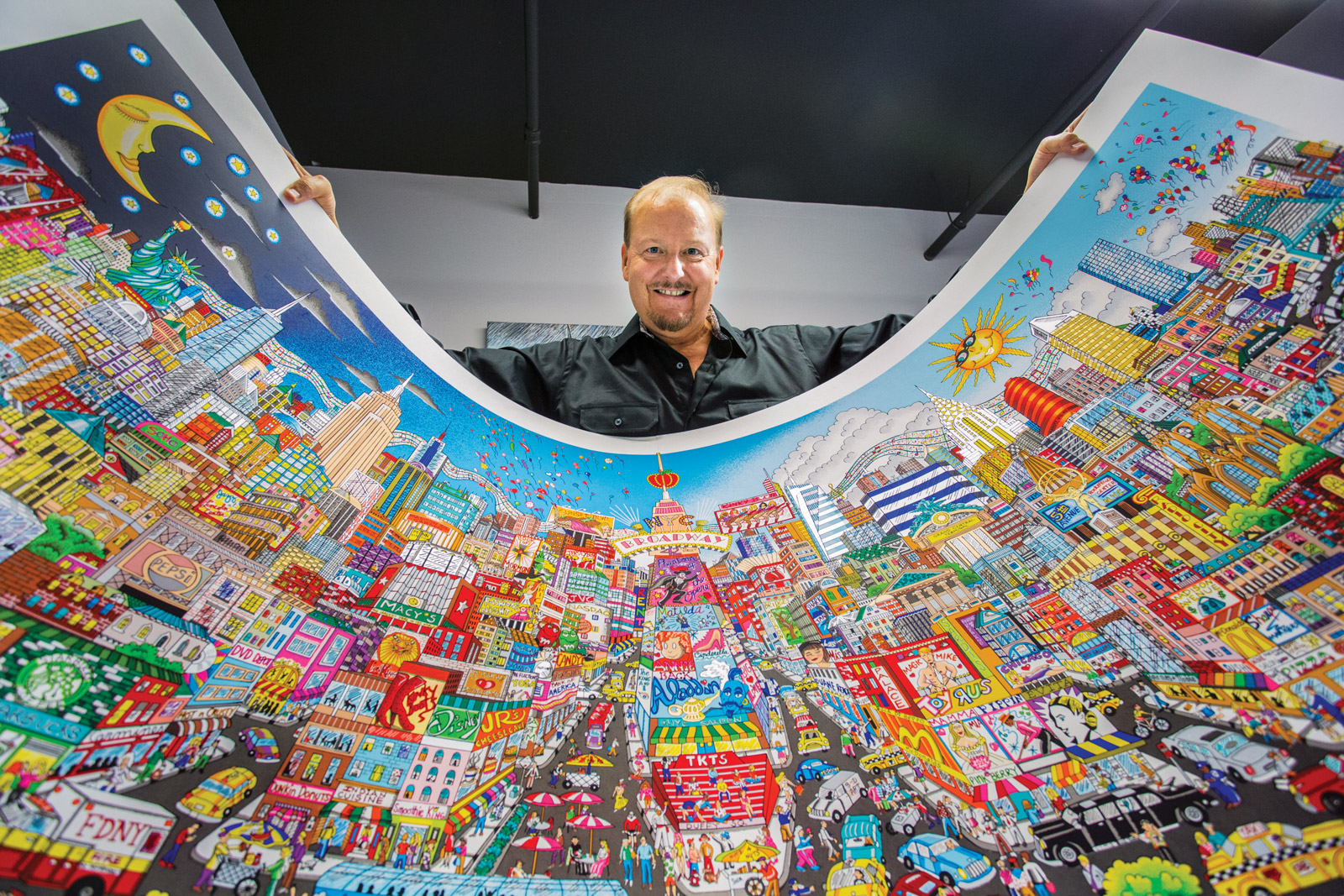
Charles Fazzino is an American pop artist, known for his silkscreen serigraphs in a 3D pop art style. His artwork incorporates influence from urban landscapes, sporting events, and modern celebrities. As described in the book about Fazzino titled The Master of 3-D Pop Art, "An innovative and imaginative storyteller, Charles Fazzino serves up a bevy of details in his unique three-dimensional creations. His collectors marvel as much at his ability to capture the entire essence of his subject matter in one statement, as they do at his use of vibrant colors, his whimsical sense of humor, and his hand-assembled multi-layered artistic style. Although, the snappy titled often gives a clue to the content of each painting, it can take years of careful observation to discern all of the details in a single Fazzino image. One of Fazzino's greatest joys is to observe visitors at exhibition of his work. 'I love to watch the smiles form as people begin to recognize elements of my paintings,' comments Fazzino. 'They point at the images as if inserting themselves into the stories. I watch that and I'm reminded of why i paint. It's all about celebrating the joy and fun we have as human beings on this planet."


Charles Fazzino is an American pop artist, known for his silkscreen serigraphs in a 3D pop art style. His artwork incorporates influence from urban landscapes, sporting events, and modern celebrities. As described in the book about Fazzino titled The Master of 3-D Pop Art, "An innovative and imaginative storyteller, Charles Fazzino serves up a bevy of details in his unique three-dimensional creations. His collectors marvel as much at his ability to capture the entire essence of his subject matter in one statement, as they do at his use of vibrant colors, his whimsical sense of humor, and his hand-assembled multi-layered artistic style. Although, the snappy titled often gives a clue to the content of each painting, it can take years of careful observation to discern all of the details in a single Fazzino image. One of Fazzino's greatest joys is to observe visitors at exhibition of his work. 'I love to watch the smiles form as people begin to recognize elements of my paintings,' comments Fazzino. 'They point at the images as if inserting themselves into the stories. I watch that and I'm reminded of why i paint. It's all about celebrating the joy and fun we have as human beings on this planet."


Charles Fazzino is an American pop artist, known for his silkscreen serigraphs in a 3D pop art style. His artwork incorporates influence from urban landscapes, sporting events, and modern celebrities. As described in the book about Fazzino titled The Master of 3-D Pop Art, "An innovative and imaginative storyteller, Charles Fazzino serves up a bevy of details in his unique three-dimensional creations. His collectors marvel as much at his ability to capture the entire essence of his subject matter in one statement, as they do at his use of vibrant colors, his whimsical sense of humor, and his hand-assembled multi-layered artistic style. Although, the snappy titled often gives a clue to the content of each painting, it can take years of careful observation to discern all of the details in a single Fazzino image. One of Fazzino's greatest joys is to observe visitors at exhibition of his work. 'I love to watch the smiles form as people begin to recognize elements of my paintings,' comments Fazzino. 'They point at the images as if inserting themselves into the stories. I watch that and I'm reminded of why i paint. It's all about celebrating the joy and fun we have as human beings on this planet."

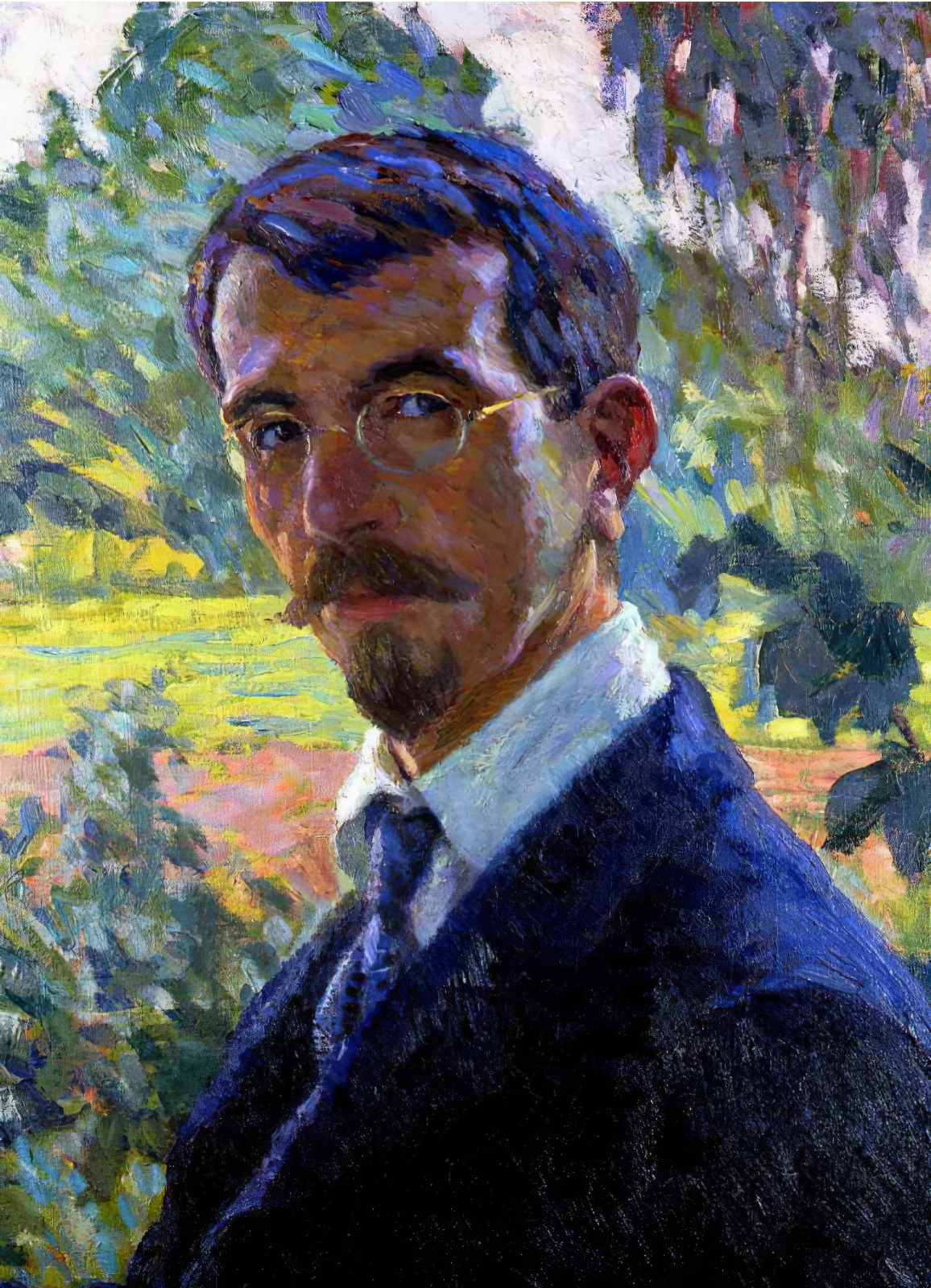
Wilhelm Heinrich Ernst Eitner was a German painter of the late nineteenth and first half of the twentieth centuries. He is known as an impressionist painter and teacher.
Eitner produced portraits, landscapes, and woodcuts in a style reminiscent of Japanese art. Despite initial rejection in German society of his impressionist style of painting, over the years he gained recognition and even the title "Claude Monet of the North." Eitner was a member of numerous art associations. His works are preserved in the Hamburg Kunsthalle.


Wilhelm Heinrich Ernst Eitner was a German painter of the late nineteenth and first half of the twentieth centuries. He is known as an impressionist painter and teacher.
Eitner produced portraits, landscapes, and woodcuts in a style reminiscent of Japanese art. Despite initial rejection in German society of his impressionist style of painting, over the years he gained recognition and even the title "Claude Monet of the North." Eitner was a member of numerous art associations. His works are preserved in the Hamburg Kunsthalle.


Wilhelm Heinrich Ernst Eitner was a German painter of the late nineteenth and first half of the twentieth centuries. He is known as an impressionist painter and teacher.
Eitner produced portraits, landscapes, and woodcuts in a style reminiscent of Japanese art. Despite initial rejection in German society of his impressionist style of painting, over the years he gained recognition and even the title "Claude Monet of the North." Eitner was a member of numerous art associations. His works are preserved in the Hamburg Kunsthalle.

